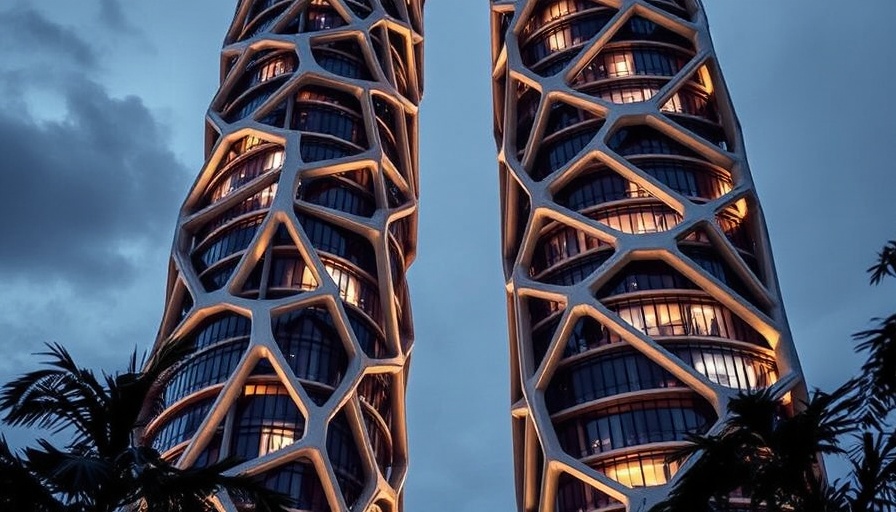
Transforming Urban Living: The AGE360 Skyscraper
The architectural landscape of Curitiba, Brazil, has undergone a remarkable transformation with the unveiling of AGE360, a residential skyscraper designed by the innovative French-Brazilian architecture studio Triptyque and local firm Architects Office. Standing tall at 124 meters, the 36-storey tower is not just a feat of engineering but a symbol of a new era in urban living, seamlessly blending aesthetics and function.
Understanding the Concrete Exoskeleton Design
The standout feature of the AGE360 is its unique load-bearing concrete exoskeleton, which defines its structure. This approach is not simply architectural; it reflects the principles of ergonomics where form meets function. The exoskeleton allows for a flexible grid system that adapts to various external forces such as wind and light while maintaining a clean, minimalist appearance.
By eliminating internal columns, the design invites unobstructed views of the city for its residents. Large windows integrated into the exoskeleton provide natural light, creating a bright and welcoming environment. This layout echoes ergonomic principles in workspace design, where open spaces are essential for productivity and comfort.
Balancing Beauty and Functionality
Involving innovative design decisions, the building includes wellness facilities that cater to residents' health. Gyms, spas, and meditation areas have been thoughtfully integrated into the tower, promoting a lifestyle that prioritizes well-being. For digital nomads, the abundance of natural light and views can significantly improve mental health and productivity in an adaptive workspace environment.
Moreover, the structure features communal spaces like a rooftop terrace and large balconies that extend the living area outdoors, fostering community. This approach aligns with how effective workspaces are designed, where collaboration is encouraged, and nature is intertwined.
Future-Ready Urban Architecture
The AGE360 skyscraper not only satisfies contemporary aesthetic demands but also anticipates future urban challenges. As cities continue to grow, innovative buildings like AGE360 offer solutions that maximize limited space while ensuring comfort and functionality. The fenestration—a critical ergonomic detail—provides vital ventilation and light, essential factors for enhancing productivity in any workspace.
Furthermore, the pondered integration of green spaces throughout the design resonates with sustainable practices, emphasizing the importance of environmental health in urban development. This not only beautifies the urban landscape but also contributes to residents’ overall well-being, analogous to smart workspace design where organic elements enhance functionality.
Conclusion: Emphasizing the Importance of Thoughtful Design
The AGE360 skyscraper embodies a new blueprint for urban architecture—one that is flexible, functional, and friendly to both people and their environment. For digital nomads and anyone looking to create an efficient workspace, the lessons from this project are invaluable. Understanding the interplay between ergonomics, aesthetics, and community can greatly enhance the design of both living and working spaces. As we redefine what our urban environments can be, it’s crucial to prioritize thoughtful design for well-being and productivity.
Consider taking inspiration from AGE360's design principles to create your own ergonomic and efficient remote workspace. Evaluate your surroundings and make adjustments that could enhance both your comfort and productivity. Start making those small changes today for a healthier work-life balance!
 Add Row
Add Row  Add
Add 




Write A Comment